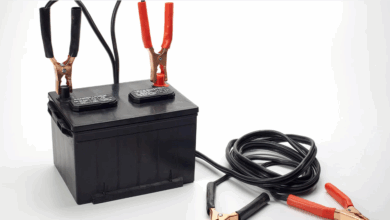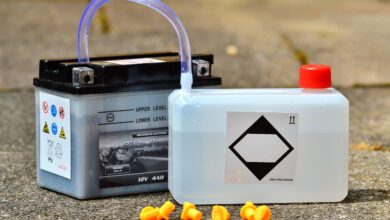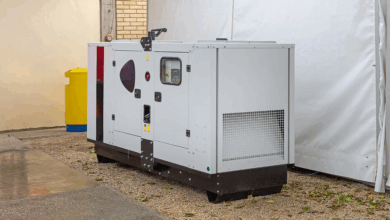How to Choose the Best Home Generator for Your Needs

Don’t Be Left in the Dark: How to Choose the Best Home Generator for Your Needs
Power outages are more than just an inconvenience; they can disrupt daily life, cause discomfort, and even pose safety risks. From spoiled food and lack of heating/cooling to essential medical equipment losing power, having a reliable backup power source is becoming increasingly important for many homeowners. A home generator offers peace of mind, ensuring that you and your family can navigate power disruptions safely and comfortably.
But stepping into the world of home generators can feel overwhelming. With various types, sizes, fuel options, and features available, how do you determine which is the best fit for your specific needs? This guide will walk you through the essential factors to consider, empowering you to make an informed decision and ensure your home remains powered when the grid goes down.
Why You Need a Home Generator
Before diving into the "how," let’s quickly reiterate the "why":
- Preparedness: Be ready for unexpected weather events, utility failures, or other emergencies that interrupt power supply.
- Comfort: Keep lights on, refrigeration working, and potentially heating or air conditioning running.
- Safety: Ensure security systems, medical devices, and communication tools (like charging phones) remain functional.
- Prevent Damage: Avoid issues like frozen pipes in winter outages or sump pumps failing leading to basement flooding.
- Maintain Daily Life: Keep essential appliances (microwave, computer, TV) operational for a sense of normalcy.
Types of Home Generators
The first major decision is choosing the type of generator that suits your situation:
-
Portable Generators:
- Description: These are typically smaller, less expensive units that you can move around. They require manual start-up and connecting appliances directly via extension cords or through a manual transfer switch (recommended for connecting to your home’s wiring).
- Pros: Affordable, relatively easy to set up for basic needs, versatile (can be used for camping, tailgating, job sites), no professional installation required for basic use.
- Cons: Require manual operation, must be placed outdoors (away from windows/doors due to carbon monoxide risk), often louder than other types, limited power output compared to standby units, need to store fuel (usually gasoline).
-
Standby Generators:
- Description: These are permanently installed outside your home, similar to an HVAC unit. They connect directly to your home’s electrical system via an automatic transfer switch. When the power goes out, the transfer switch detects the outage, signals the generator to start, and automatically switches your home’s power source. When grid power returns, it switches back and the generator shuts off.
- Pros: Automatic operation (no manual intervention needed), power your entire home or selected circuits seamlessly, higher power output capabilities, quieter operation than most portables, run on natural gas or propane (no need for frequent refueling), less vulnerable to theft (being fixed).
- Cons: Significant upfront cost (unit + professional installation), require permitting and professional installation, take up permanent yard space, require regular maintenance checks.
- Inverter Generators:
- Description: Often a subset of portable generators, inverter technology allows these units to produce cleaner, more stable power than traditional portables. They adjust engine speed based on demand, making them more fuel-efficient and significantly quieter.
- Pros: Quieter operation, fuel-efficient, produce clean power (safe for sensitive electronics like laptops and smartphones), lightweight and compact.
- Cons: Generally more expensive than conventional portable generators of similar wattage, power output is often lower than larger conventional portables or standby units (though larger inverter models exist).
Key Factors to Consider When Choosing
Once you understand the types, you need to evaluate your specific requirements:
-
Power Needs (Sizing): This is CRITICAL.
- Undersizing means the generator won’t power everything you need, or it will overload. Oversizing means unnecessary cost.
- Appliances have two power ratings:
- Running Watts (or Rated Watts): The power needed to keep the item running.
- Starting Watts (or Surge Watts): The brief burst of extra power needed to start motors (like refrigerators, pumps, air conditioners). This can be 2-3 times the running watts.
- How to Estimate:
- Make a list of essential items you want to power during an outage (lights, refrigerator, furnace fan, sump pump, medical equipment).
- If using a portable, list comfort items you might also want (TV, microwave, computer, a few outlets).
- Find the running and starting watts for each item (check the appliance label or owner’s manual).
- Add up the total running watts of everything you might want to run simultaneously.
- Identify the single item with the highest starting watts requirement.
- Your required generator running watts should meet or exceed your total running watts.
- Your required generator starting watts should meet or exceed your total running watts plus the single highest starting watt requirement.
- Example: Total running watts = 3000W. Highest starting watts (fridge) = 1200W. Minimum generator running watts needed = 3000W. Minimum generator starting watts needed = 3000W + 1200W = 4200W. You’d look for a generator rated around 3000-3500 running watts and 4200+ starting watts.
- Tip: It’s often wise to add a 10-20% buffer to your calculation. For standby generators powering most/all your home, a professional assessment is essential.
-
Fuel Type:
- Gasoline: Most common for portables. Widely available, but needs proper storage (stale gas is an issue), can be hard to get during widespread outages, flammable, produces significant fumes.
- Propane: Available in tanks (portable) or large residential tanks (standby). Stores well indefinitely, cleaner burning than gas, can be safer to store than gas. However, propane tanks can freeze up in very cold weather, and propane is often less energy-dense than gasoline, requiring larger fuel volumes.
- Natural Gas: Only for standby generators connected to a municipal line. Unlimited fuel supply during an outage (unless the gas line is also affected), very clean burning, no on-site storage needed. Availability depends on having a natural gas line.
- Diesel: More common for very large commercial/industrial generators. Fuel stores well, engines are durable and fuel-efficient under load. However, diesel fuel can gel in cold weather, requires more maintenance, and diesel generators are typically more expensive and louder.
- Dual Fuel: Some portable generators can run on both gasoline and propane, offering flexibility.
-
Automatic vs. Manual Start:
- Manual: You physically start the generator (usually pull cord or electric start button) and manually connect items or flip transfer switch breakers. Standard for portables.
- Automatic: The generator starts and switches on power automatically when an outage is detected. Requires an automatic transfer switch. Standard for standby generators. Essential if you need power when you’re not home or for critical medical needs.
-
Noise Level:
- Measured in decibels (dB). Conventional portables are often 70-80 dB (like a vacuum cleaner or loud conversation). Inverter generators are often 50-65 dB (closer to normal conversation or dishwasher). Standby units vary but are generally quieter than conventional portables, especially from a distance. Consider noise ordinances and your neighbors.
-
Portability and Placement:
- Portable: Do you need wheels? How heavy is it? Where will you store it? Remember, it must be used outdoors, away from windows and doors.
- Standby: Requires a dedicated outdoor location on a level surface, often a concrete pad. Needs clearance for ventilation and maintenance. Professional installation will determine the best spot.
-
Budget:
- Portable generators range from a few hundred dollars for small inverter or basic models to $2000+ for large, feature-rich units.
- Standby generators are a significant investment, typically ranging from $4,000 to $20,000 or more, including the unit and professional installation (transfer switch, gas line, electrical work, permits).
-
Safety Features:
- Look for features like Carbon Monoxide (CO) shutoff (especially crucial for portables), low-oil shutoff (prevents engine damage), overload protection (breaker), and covered outlets.
- Brand Reputation and Warranty:
- Research reliable brands known for durability and customer service. Check warranty length and what it covers.
Calculating Your Specific Power Needs (Step-by-Step Example)
Let’s say you want to power these essentials during an outage using a portable generator:
- Refrigerator: 800 running watts / 1200 starting watts
- Sump Pump: 800 running watts / 1300 starting watts
- Gas Furnace Fan (assuming electric ignition): 400 running watts / 800 starting watts
- Several Lights (LED): 200 running watts / 0 starting watts
- Microwave (occasional use): 1000 running watts / 0 starting watts
- Phone Chargers/Laptops: 300 running watts / 0 starting watts
- List Running Watts: 800 + 800 + 400 + 200 + 1000 + 300 = 3500 Total Running Watts
- Identify Highest Starting Watts: Sump Pump at 1300 Starting Watts
- Calculate Minimum Starting Watts Needed: Total Running Watts + Highest Starting Watts = 3500 + 1300 = 4800 Minimum Starting Watts
- Result: You need a portable generator with at least 3500 running watts and 4800 starting watts. Look for models advertised in the 3500-4000 running watt range, verifying the starting watt specification. If you only planned to run the fridge, furnace fan, and lights simultaneously (and the sump pump doesn’t kick on at the same time as the fridge starts), your running watts would be 800+400+200=1400W, and starting watts 1400+1200 (fridge start)=2600W. This highlights the importance of knowing which items might cycle on simultaneously.
Installation and Safety
- Portable: Requires proper grounding. Never run indoors or in a garage. Use heavy-duty, outdoor-rated extension cords. The safest way to power house circuits is via a professionally installed manual transfer switch and inlet box. Absolutely never backfeed power by plugging the generator into a wall outlet (this is illegal and incredibly dangerous for utility workers and your neighbors).
- Standby: Requires professional installation by a licensed electrician and plumber (for the gas connection). This involves placement, wiring the transfer switch, connecting to the fuel source, and often obtaining permits.
Maintenance
All generators require regular maintenance: oil changes, filter replacements, fuel checks, battery checks (for electric start models), and periodic test runs. Follow the manufacturer’s recommended schedule.
FAQs
- Q: Can I just plug my portable generator into a wall outlet in my house?
- Q: How long can a generator run?
- A: It depends on the fuel source and load. Portable gasoline generators typically run 8-12 hours on a tank at half load. Propane tanks can last longer depending on size. Natural gas standby generators can run indefinitely as long as the gas supply is active.
- Q: How often should I run my generator for maintenance?
- A: Most manufacturers recommend starting and running the generator under a small load for 15-30 minutes every month or two. Standby units often have an automatic exercise mode for this purpose.
- Q: Where should I place a portable generator?
- A: Outdoors, at least 15-20 feet away from your home, windows, and doors, with the exhaust directed away from occupied buildings. On a dry, level surface protected from rain/snow (a generator tent or cover can help, but ensure ventilation).
- Q: What’s the difference between ‘clean’ power and regular power?
- A: Regular portable generators can produce power with voltage fluctuations and waveform distortions ("dirty power"). Inverter generators produce power with a stable voltage and pure sine wave ("clean power"), which is necessary for sensitive electronics like computers, smartphones, and modern TVs without risking damage.
Conclusion
Choosing the best home generator is a significant decision that offers invaluable security and comfort during power outages. It’s not a one-size-fits-all purchase. By carefully assessing your power needs, understanding the different types of generators and fuel sources, considering factors like noise and budget, and prioritizing safety through proper installation and operation, you can confidently select a generator that will reliably keep the lights on, essential appliances running, and your family safe when the unexpected happens. Don’t wait until the next storm hits; start planning your backup power solution today.




![How to Bypass CO Sensor on Generator – [4-Step Safety Guide]](https://www.generator411.com/wp-content/uploads/2025/08/co-sensor-on-generator-390x220.png)